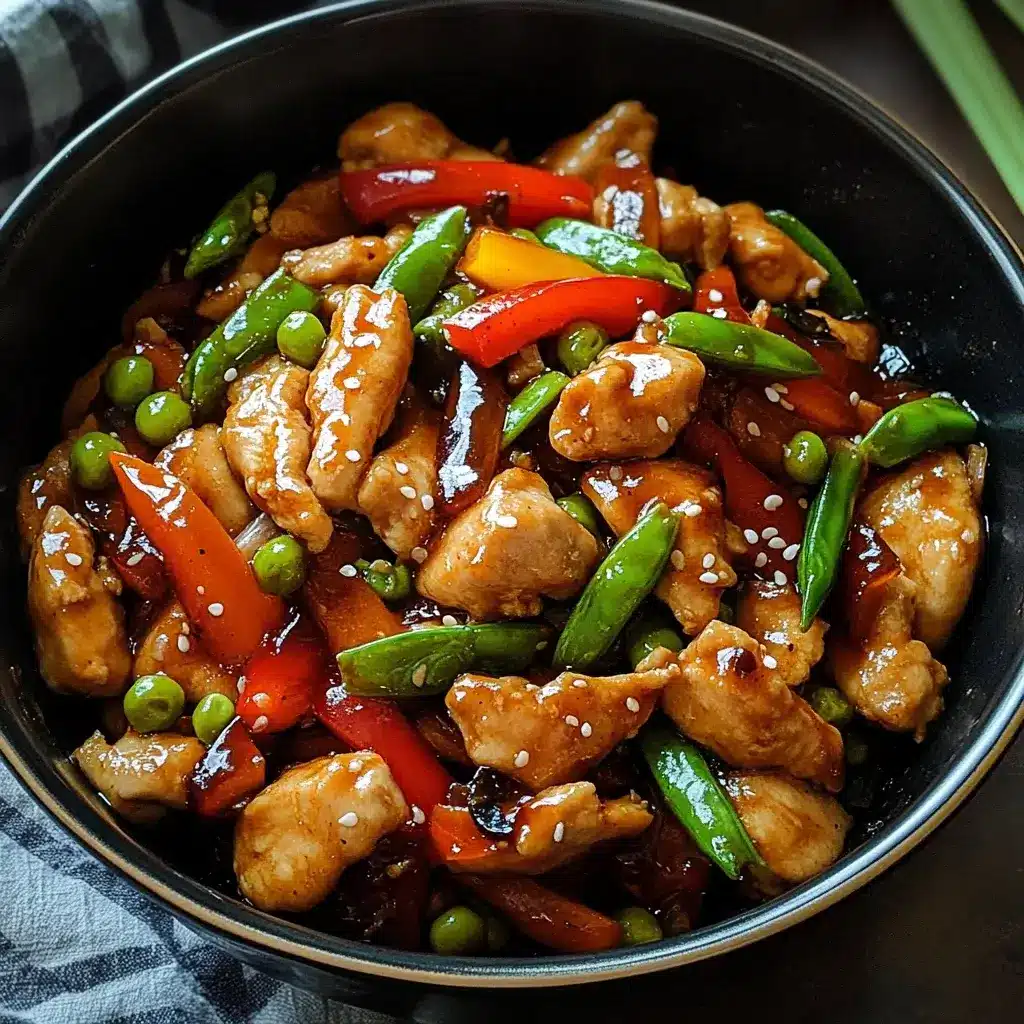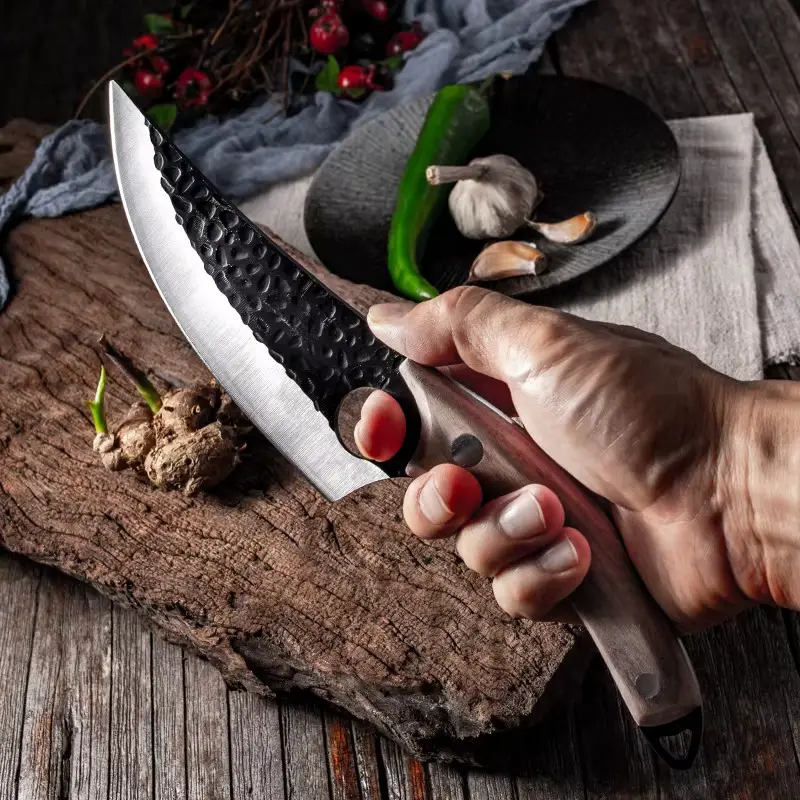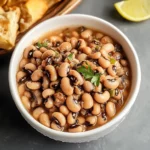Of all the dishes in the American-Chinese takeout pantheon, none holds a more special, savory-sweet place in my heart than Mongolian Beef. For years, it was my go-to order, the one dish I could never resist. The combination of incredibly tender meat and that glossy, deeply flavorful, slightly sweet sauce served over fluffy white rice was pure comfort. For the longest time, I was convinced it was some kind of culinary magic, a secret recipe impossible to replicate in a home kitchen. The chicken version, while less common on menus, was something I often wished for. One day, fueled by a desire to crack the code, I decided to create my own Mongolian Chicken Stir-Fry. The first attempt was a revelation. The secret wasn’t magic at all; it was technique. It was the simple, brilliant method of coating the chicken in cornstarch to create a velvety texture and a light, crispy crust. It was the perfect, simple balance of soy sauce, brown sugar, garlic, and ginger. The first time I served it, my family was floored. The chicken was more tender and the sauce more vibrant than any takeout we’d ever had. Best of all, it came together faster than a delivery driver could ever find our house. This recipe is the culmination of that journey—it’s my perfected, better-than-takeout version that will make you feel like a stir-fry master in your own kitchen.
The Ultimate Mongolian Chicken Stir-Fry: A Takeout Classic, Perfected
Mongolian Chicken is a beloved stir-fry dish known for its signature sauce: a rich, savory, and slightly sweet glaze that clings perfectly to every piece of tender chicken. Despite its name, the dish has no connection to Mongolia. It’s a culinary invention of Taiwanese-American restaurants, designed to appeal to a broad palate with its simple yet powerful flavor profile. It masterfully balances the umami of soy sauce, the warmth of garlic and ginger, and the deep, molasses-like sweetness of brown sugar.
What truly sets an exceptional Mongolian Chicken apart is the texture of the chicken itself. This recipe utilizes a classic Chinese cooking technique called “velveting,” where pieces of chicken are coated in a cornstarch mixture before being quickly fried. This process creates a light, protective crust that locks in moisture, ensuring the chicken remains incredibly juicy and tender on the inside, while providing a delightful, subtle crispiness on the outside. This stir-fry is a powerhouse of flavor and texture, a dish that is deceptively easy to make yet delivers a stunningly impressive result every single time.
Ingredients for a Flawless Mongolian Chicken Stir-Fry
This recipe is broken down into three simple parts: the chicken and its coating, the iconic sauce, and the aromatics that bring it all together. Using fresh, quality ingredients is key to achieving that restaurant-level flavor.
For the Crispy and Tender Chicken:
- Boneless, Skinless Chicken Thighs: 1.5 lbs (about 680g), cut into 1-inch bite-sized pieces. Chicken thighs are highly recommended for their rich flavor and resistance to drying out.
- Cornstarch: 1/4 cup (32g). This is the secret to the chicken’s velvety texture and crispy coating.
- Low-Sodium Soy Sauce: 1 tablespoon.
- Vegetable Oil or other neutral oil: 1 tablespoon.
For the Irresistible Mongolian Sauce:
- Low-Sodium Soy Sauce: 1/2 cup (120ml). Using low-sodium gives you control over the final saltiness.
- Water or Low-Sodium Chicken Broth: 1/2 cup (120ml). Broth adds a slightly richer background flavor.
- Dark Brown Sugar: 1/2 cup (110g), packed. The molasses content in dark brown sugar is key to the sauce’s signature color and deep flavor.
- Fresh Ginger: 1 tablespoon, finely minced or grated.
- Fresh Garlic: 3 cloves, finely minced or grated.
- Cornstarch Slurry: 1 tablespoon cornstarch mixed with 2 tablespoons of cold water.
For the Stir-Fry and Garnish:
- Vegetable Oil or other high-smoke-point oil: 1/4 cup (60ml), for frying.
- Scallions (Green Onions): 1 bunch (about 6-8), cut into 2-inch lengths, with white and green parts separated.
- Fresh Garlic: 3 additional cloves, minced or thinly sliced.
- Fresh Ginger: 1 tablespoon additional, minced.
- Sesame Seeds: For garnish (optional).
Step-by-Step Instructions: From Prep to Perfection
A great stir-fry is all about preparation and timing. Follow these steps for a dish that comes together quickly and flawlessly.
Step 1: Velvet the Chicken
In a medium bowl, combine the bite-sized chicken pieces with 1/4 cup of cornstarch, 1 tablespoon of soy sauce, and 1 tablespoon of vegetable oil. Use your hands or a spoon to toss everything together until every piece of chicken is evenly and thoroughly coated in a thick, pasty layer. The cornstarch coating should not be dusty or dry. Set this aside to marinate for at least 15-20 minutes while you prepare the other ingredients.
Step 2: Prepare the Mongolian Sauce
In a separate small bowl or liquid measuring cup, whisk together the sauce ingredients: 1/2 cup low-sodium soy sauce, 1/2 cup water (or broth), and 1/2 cup packed dark brown sugar. Continue whisking until the brown sugar is completely dissolved. Stir in the 1 tablespoon of minced ginger and 3 cloves of minced garlic. Set this sauce mixture aside. In another, even smaller bowl, prepare your cornstarch slurry by whisking together 1 tablespoon of cornstarch and 2 tablespoons of cold water until smooth. Keep this slurry separate; it will be used to thicken the sauce at the very end.
Step 3: Prepare the Aromatics and Set Up Your Station
Wash and chop your scallions, separating the white/light green parts from the dark green parts. Mince the additional garlic and ginger for the stir-fry. Place all your components—the coated chicken, the sauce mixture, the cornstarch slurry, and the aromatics—near your stove. A stir-fry moves fast, so having everything within reach is essential.
Step 4: Cook the Chicken
Heat 1/4 cup of oil in a large wok or a heavy-bottomed skillet over medium-high heat. The oil should be hot enough that a piece of chicken sizzles immediately upon contact. Carefully add half of the coated chicken to the hot oil in a single layer, making sure not to overcrowd the pan. Fry for 2-3 minutes per side, until the chicken is golden brown, crispy, and cooked through. Use a slotted spoon to remove the cooked chicken and place it on a wire rack or a paper-towel-lined plate. Repeat with the second batch of chicken.
Step 5: Build the Flavor Base
Pour out all but 1 tablespoon of the oil from the wok. Reduce the heat to medium. Add the white and light green parts of the scallions, along with the additional minced garlic and ginger. Stir-fry for about 30-60 seconds until fragrant and aromatic. Be very careful not to let the garlic burn.
Step 6: Create the Sauce
Pour the prepared soy sauce and brown sugar mixture into the wok with the aromatics. Bring the sauce to a vigorous simmer, stirring occasionally. Let it bubble for 1-2 minutes to allow the flavors to meld.
Step 7: Thicken the Sauce
Give your cornstarch slurry a quick re-whisk to ensure it’s smooth. While constantly stirring the simmering sauce in the wok, slowly pour in the slurry. Continue to stir, and within 30-60 seconds, you will see the sauce magically transform. It will thicken, become glossy, and beautifully coat the back of a spoon.
Step 8: Combine and Finish
Turn off the heat. Immediately add the crispy cooked chicken and the dark green parts of the scallions to the wok. Toss everything together quickly but gently, ensuring every piece of chicken is enveloped in the luscious, glossy sauce. The goal is to coat, not to cook further, which preserves the chicken’s crispy texture.
Step 9: Serve Immediately
Transfer the Mongolian Chicken to a serving platter. Garnish with sesame seeds if desired, and serve immediately with hot steamed rice.
Nutrition Facts
- Servings: 6 servings
- Calories per serving: Approximately 550-600 kcal (excluding rice)
Disclaimer: The nutritional information provided is an estimate and can vary significantly based on the specific ingredients used, such as the cut of chicken and amount of oil absorbed during frying.
Preparation and Cooking Time
- Preparation Time: 20 minutes (including marinating)
- Cook Time: 15 minutes
- Total Time: 35 minutes
How to Serve Your Mongolian Chicken Stir-Fry
Serving this dish is simple, as it’s a star in its own right. The focus is on finding the perfect base to soak up every last drop of the incredible sauce.
The Perfect Base
- Steamed White Rice: Fluffy jasmine or short-grain white rice is the ultimate classic pairing. It provides a neutral, absorbent base that lets the savory-sweet sauce shine.
- Brown Rice: For a healthier, nuttier, and more fibrous option, brown rice is an excellent choice.
- Noodles: Serve over a bed of cooked lo mein or ramen noodles for a delicious Mongolian Chicken Noodle dish.
- Low-Carb Options: To keep things light, serve the stir-fry over cauliflower rice, quinoa, or alongside steamed broccoli.
Adding Vegetables to Your Stir-Fry
While classic Mongolian Chicken is often just chicken and scallions, you can easily turn it into a complete one-pan meal by adding vegetables.
- How to Add Veggies: After you’ve cooked the chicken and set it aside, stir-fry your chosen vegetables in the remaining oil until they are tender-crisp. Then, remove them and set them aside with the chicken. Proceed with making the sauce, and add both the chicken and the cooked vegetables back to the pan at the very end.
- Best Vegetables to Add:
- Broccoli Florets: Cut into small, bite-sized pieces.
- Sliced Onions: White or yellow onions, thickly sliced.
- Sliced Bell Peppers: Red, yellow, or orange for a pop of color and sweetness.
- Sliced Carrots: Thinly sliced on a diagonal.
- Mushrooms: Sliced cremini or shiitake mushrooms.
5 Essential Tips for Restaurant-Quality Results
- Don’t Skip the Velveting Step: The cornstarch coating is the most important technique in this recipe. It’s the secret to achieving chicken that is incredibly moist and tender on the inside with a light, crispy exterior that perfectly grabs onto the sauce. Don’t just dust the chicken; make sure it’s fully coated in the pasty mixture.
- Fry in Batches and Don’t Crowd the Pan: To get that crispy crust, the chicken needs to fry, not steam. Adding too much chicken to the pan at once will dramatically lower the oil temperature, causing the chicken to steam in its own juices and resulting in a soggy, grey coating. Frying in two or even three batches is essential for success.
- Use Fresh Garlic and Ginger: While the tubes of pre-minced garlic and ginger are convenient, they lack the potent, bright flavor of fresh aromatics. The vibrant, zesty punch from freshly minced garlic and ginger is a cornerstone of this dish’s flavor profile and makes a world of difference.
- Master the Cornstarch Slurry: The key to a perfect slurry is using cold water. If you mix cornstarch with hot liquid, it will clump up immediately. Whisk the cornstarch and cold water together until completely smooth right before you’re ready to add it to the simmering sauce. Pouring it in slowly while stirring ensures a smooth, glossy sauce with no lumps.
- The Final Toss is Quick: Once your sauce is thickened, the cooking is essentially over. The final step of adding the chicken and green scallions back to the pan should be quick—no more than 30 seconds of tossing to coat everything evenly. This prevents the crispy coating on the chicken from getting saturated and soggy, preserving that wonderful textural contrast.
Frequently Asked Questions (FAQ) About Mongolian Chicken
1. What is the difference between Mongolian Chicken and General Tso’s Chicken?
While both are popular American-Chinese dishes, they have distinct flavor profiles. Mongolian Chicken is primarily savory and sweet, with a flavor base of soy sauce and brown sugar. General Tso’s Chicken, on the other hand, is known for its sweet, sour, and spicy sauce, which often includes rice vinegar, hoisin sauce, and a significant amount of dried red chilies for heat. General Tso’s chicken is also typically deep-fried for a much crunchier crust.
2. Can I make this recipe with chicken breasts?
Yes, you can use chicken breasts. However, chicken breasts are much leaner and can dry out more easily than thighs. To ensure they stay tender, be extra careful not to overcook them during the frying step. The velveting process with cornstarch will help significantly in keeping them moist.
3. How can I make this dish spicy?
To add a kick of heat, you can add 1-2 teaspoons of Sriracha or chili garlic sauce to the sauce mixture. For a more authentic heat, toss 4-6 dried whole red chilies into the hot oil along with the garlic and ginger when you are building the flavor base.
4. Can this recipe be made gluten-free?
Yes, it’s very easy to make this recipe gluten-free. Simply substitute the low-sodium soy sauce with an equal amount of gluten-free tamari or coconut aminos. Cornstarch is naturally gluten-free, so no other substitutions are needed.
5. What’s the best way to store and reheat leftovers?
Store leftovers in an airtight container in the refrigerator for up to 3 days. Be aware that the crispy coating on the chicken will soften upon refrigeration. The best way to reheat it is in a hot skillet or wok over medium-high heat for a few minutes until warmed through. This helps to revive some of the texture. Microwaving will also work, but the chicken will be much softer.

Mongolian Chicken Stir Fry recipe
Ingredients
For the Crispy and Tender Chicken:
- Boneless, Skinless Chicken Thighs: 1.5 lbs (about 680g), cut into 1-inch bite-sized pieces. Chicken thighs are highly recommended for their rich flavor and resistance to drying out.
- Cornstarch: 1/4 cup (32g). This is the secret to the chicken’s velvety texture and crispy coating.
- Low-Sodium Soy Sauce: 1 tablespoon.
- Vegetable Oil or other neutral oil: 1 tablespoon.
For the Irresistible Mongolian Sauce:
- Low-Sodium Soy Sauce: 1/2 cup (120ml). Using low-sodium gives you control over the final saltiness.
- Water or Low-Sodium Chicken Broth: 1/2 cup (120ml). Broth adds a slightly richer background flavor.
- Dark Brown Sugar: 1/2 cup (110g), packed. The molasses content in dark brown sugar is key to the sauce’s signature color and deep flavor.
- Fresh Ginger: 1 tablespoon, finely minced or grated.
- Fresh Garlic: 3 cloves, finely minced or grated.
- Cornstarch Slurry: 1 tablespoon cornstarch mixed with 2 tablespoons of cold water.
For the Stir-Fry and Garnish:
- Vegetable Oil or other high-smoke-point oil: 1/4 cup (60ml), for frying.
- Scallions (Green Onions): 1 bunch (about 6-8), cut into 2-inch lengths, with white and green parts separated.
- Fresh Garlic: 3 additional cloves, minced or thinly sliced.
- Fresh Ginger: 1 tablespoon additional, minced.
- Sesame Seeds: For garnish (optional).
Instructions
Step 1: Velvet the Chicken
In a medium bowl, combine the bite-sized chicken pieces with 1/4 cup of cornstarch, 1 tablespoon of soy sauce, and 1 tablespoon of vegetable oil. Use your hands or a spoon to toss everything together until every piece of chicken is evenly and thoroughly coated in a thick, pasty layer. The cornstarch coating should not be dusty or dry. Set this aside to marinate for at least 15-20 minutes while you prepare the other ingredients.
Step 2: Prepare the Mongolian Sauce
In a separate small bowl or liquid measuring cup, whisk together the sauce ingredients: 1/2 cup low-sodium soy sauce, 1/2 cup water (or broth), and 1/2 cup packed dark brown sugar. Continue whisking until the brown sugar is completely dissolved. Stir in the 1 tablespoon of minced ginger and 3 cloves of minced garlic. Set this sauce mixture aside. In another, even smaller bowl, prepare your cornstarch slurry by whisking together 1 tablespoon of cornstarch and 2 tablespoons of cold water until smooth. Keep this slurry separate; it will be used to thicken the sauce at the very end.
Step 3: Prepare the Aromatics and Set Up Your Station
Wash and chop your scallions, separating the white/light green parts from the dark green parts. Mince the additional garlic and ginger for the stir-fry. Place all your components—the coated chicken, the sauce mixture, the cornstarch slurry, and the aromatics—near your stove. A stir-fry moves fast, so having everything within reach is essential.
Step 4: Cook the Chicken
Heat 1/4 cup of oil in a large wok or a heavy-bottomed skillet over medium-high heat. The oil should be hot enough that a piece of chicken sizzles immediately upon contact. Carefully add half of the coated chicken to the hot oil in a single layer, making sure not to overcrowd the pan. Fry for 2-3 minutes per side, until the chicken is golden brown, crispy, and cooked through. Use a slotted spoon to remove the cooked chicken and place it on a wire rack or a paper-towel-lined plate. Repeat with the second batch of chicken.
Step 5: Build the Flavor Base
Pour out all but 1 tablespoon of the oil from the wok. Reduce the heat to medium. Add the white and light green parts of the scallions, along with the additional minced garlic and ginger. Stir-fry for about 30-60 seconds until fragrant and aromatic. Be very careful not to let the garlic burn.
Step 6: Create the Sauce
Pour the prepared soy sauce and brown sugar mixture into the wok with the aromatics. Bring the sauce to a vigorous simmer, stirring occasionally. Let it bubble for 1-2 minutes to allow the flavors to meld.
Step 7: Thicken the Sauce
Give your cornstarch slurry a quick re-whisk to ensure it’s smooth. While constantly stirring the simmering sauce in the wok, slowly pour in the slurry. Continue to stir, and within 30-60 seconds, you will see the sauce magically transform. It will thicken, become glossy, and beautifully coat the back of a spoon.
Step 8: Combine and Finish
Turn off the heat. Immediately add the crispy cooked chicken and the dark green parts of the scallions to the wok. Toss everything together quickly but gently, ensuring every piece of chicken is enveloped in the luscious, glossy sauce. The goal is to coat, not to cook further, which preserves the chicken’s crispy texture.
Step 9: Serve Immediately
Transfer the Mongolian Chicken to a serving platter. Garnish with sesame seeds if desired, and serve immediately with hot steamed rice.
Nutrition
- Serving Size: one normal portion
- Calories: 550-600 kcal





